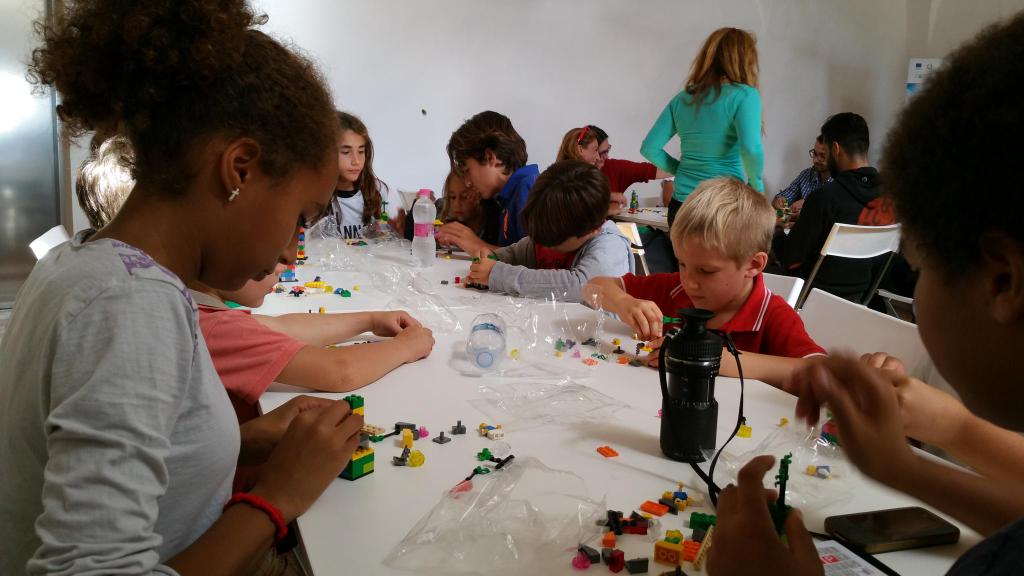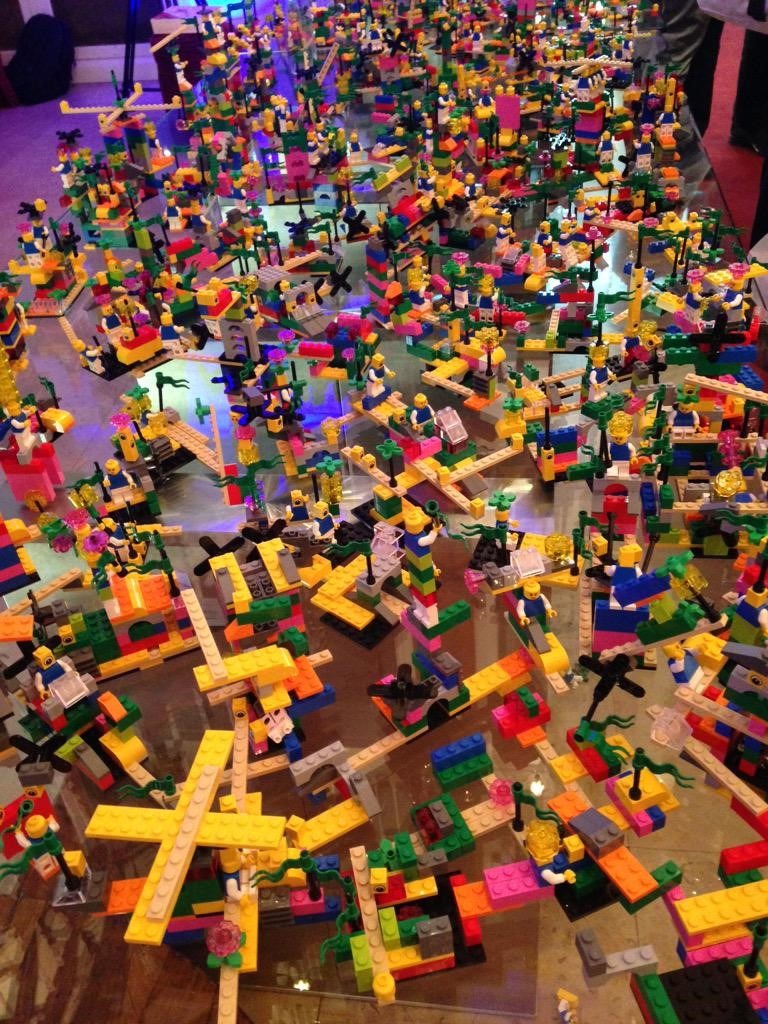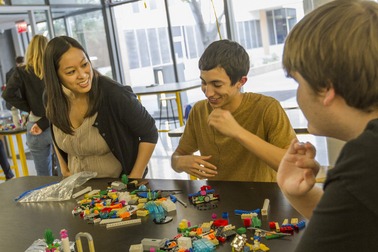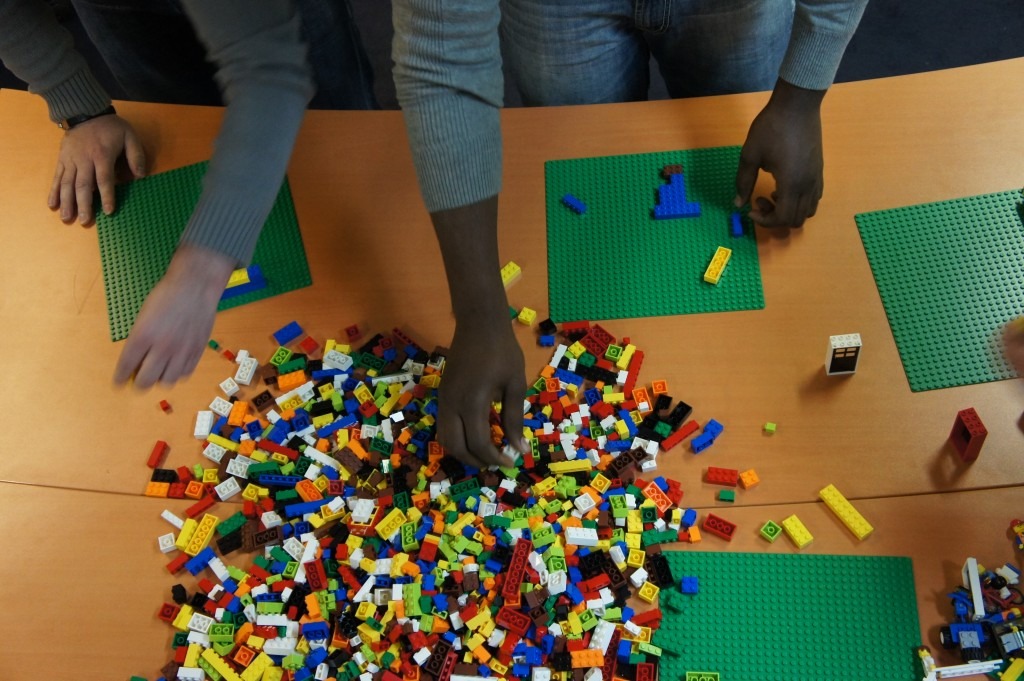![]()
 The last September the 26th in Todi I facilitated two Lego Serious Play workshops open to the public. As already said in my previous post we played with marketing. Indeed, we have all created together (or rather co-created) many useful ideas to our friend Microsoft to get back to being the number one.
The last September the 26th in Todi I facilitated two Lego Serious Play workshops open to the public. As already said in my previous post we played with marketing. Indeed, we have all created together (or rather co-created) many useful ideas to our friend Microsoft to get back to being the number one.
It is always difficult to set up a workshop which isn’t addressed to a specific target. That’s why building a public workshop, and in particular a workshop using the Lego Serious Play method (normally used in solving specific issues in an organization) took more than an effort of creativity.
Though the point is not just the effort, but the fact the this is exactly what every marketer have to face when setting up a content marketing strategy, haven’t it? Is not just putting oneself in the shoes of the consumer what everybody refers as “customer centric” strategies? For this reason my last post title was serious play with marketing. Because being able to engage with a wide set of targets with a specific theme is itself marketing. Moreover the proposed workshop theme is very (strategic) marketing.
In identifying a suitable theme for the Lego Serious Play workshop targeted to the general public, I relied on two safe assumptions (albeit concise):
- Something whose knowledge was widespread
- The technological nature of Todi Appy Days event
 I then decided to involve a worldwide technology brand thus choosing Microsoft. To generate ideas and create engagement the specific theme was how to bring back Microsoft to be number one.
I then decided to involve a worldwide technology brand thus choosing Microsoft. To generate ideas and create engagement the specific theme was how to bring back Microsoft to be number one.
As expected in the morning workshop the majority of participants were far most the typical Appy Days public, i.e. young people, women, all very passionate for technology and coding. Surprisingly there were also a number of professionals in the event industry, intrigued by Lego Serious Play methodology.
After the warm-up phase where the participants acquire the construction techniques, the core process (challenge-construction-storymaking-reflection) and the dialogue rules, I.e. using model as the basis of any argument, all participants at first have to build an individual model representing the main challenge Microsoft have to face to be back the no. 1. Then every participant has transformed its individual model to represent the solution to the identified challenge.
 Several couples challenge-solution were created by the participants. The one that emerged at most was to be more focused to the consumer as a person, with a special eye to innovation both application specific and general disruptive. This is easily seen in the model in the above picture, where the consumer is at the center (the element with the minifigure) observed by two eyes, one of which, that of application specific innovation, is surmounted by a waving flag. The third eye looking from the side, above and feeding a propeller, indicates the long-term vision related to general disruptive innovation.
Several couples challenge-solution were created by the participants. The one that emerged at most was to be more focused to the consumer as a person, with a special eye to innovation both application specific and general disruptive. This is easily seen in the model in the above picture, where the consumer is at the center (the element with the minifigure) observed by two eyes, one of which, that of application specific innovation, is surmounted by a waving flag. The third eye looking from the side, above and feeding a propeller, indicates the long-term vision related to general disruptive innovation.
For each table participants of have built on an empty base located in the middle of the table a shared model with those features Microsoft should possess to be more successful. This shared model was built from the core identity of each participant, i.e. that element, identified and extracted from the individual model, without which the individual model would no longer represent the solution to the challenge Microsoft have to face. At the end of this process each table shared with the others the history linked to the shared model, then presenting the features that Microsoft should have to meet the challenge of returning to be n. 1.
 This sharing has produced a rich set of considerations, ideas and solutions, so valuable that if I were in the shoes of Microsoft I would try to get them. Beyond that, though, was seeing the invaluable richness of a Lego Serious Play workshop in action, i.e. a group of people not knowing each other develop a co-created and shared solution, where the participants negotiate so easily, a solution that belongs to all, assembled from parts individually produced, something surprising, often unimaginable before the workshop
This sharing has produced a rich set of considerations, ideas and solutions, so valuable that if I were in the shoes of Microsoft I would try to get them. Beyond that, though, was seeing the invaluable richness of a Lego Serious Play workshop in action, i.e. a group of people not knowing each other develop a co-created and shared solution, where the participants negotiate so easily, a solution that belongs to all, assembled from parts individually produced, something surprising, often unimaginable before the workshop
In the afternoon workshop, thanks to the beautiful day and the magic of the word Lego®, a lot of families with their children wanted to attend. Although the Lego Serious Play methodology is suitable also for children, the workshop I designed was mainly for an adult audience. Thus I’ve to face a dilemma: protect the workshop (and send the children away) or accept the children and spoil the workshop. I then decided that take the risk and I welcomed the children. I’ve settled them into a table of their own, I have proposed them a specific theme, similar to the general theme, where they have to help Microsoft to improve the Xbox. Despite the fact that the noise level was higher than that in the morning, the workshop has achieved all the results and beyond, with a high level of engagement by both children and adults.
 So a day that has definitely reach the goal to make the Lego Serious Play method known to many people from so different targets, but that was also a metaphor of what a marketer needs to do to be successful.
So a day that has definitely reach the goal to make the Lego Serious Play method known to many people from so different targets, but that was also a metaphor of what a marketer needs to do to be successful.
One last note: in the afternoon workshops, perhaps thanks to the presence of so many youngsters and many women, one of the considerations shared by most groups in their models was the fact that Microsoft need to increase the female management and the brand has to become more women appealing, leaving the standard male, business oriented aura it possess today.








 Become a LEGO Serious Play facilitator - check one of the upcoming training events!
Become a LEGO Serious Play facilitator - check one of the upcoming training events!
Thanks for the article, sounds like a great way to both introducing LSP to a group of people and exploring a topic like the one you did. A question to me is how you approach hosting such a large group (of say forty people?) being the only facilitator, or did you receive assistance? What is and is not possible with a large group on several tables.
Thanks for your words Kaj. I’ve approached hosting such a large group being the only facilitator and (like the case of this post) being with another facilitator (in that case Simona Orlandi). In both cases it’s important that you split the participants in small groups (say 4-5) per table in order to have a fast storytelling process (to keep such a large group in flow) and to layout the tables in a way you have 4 to 6 tables sourrounding you. So if you’re the only facilitator for a group bigger than 30 (or the maximum people you can put on tables sourrounding you) you need to make people follow you on large screen at first and moving around the room broadcasting the processes selecting specific table each time. The key point is to keep everybody in the flow.
Thanks so much for the in-detail response. Very useful. I can see this work indeed, although I guess it is best to stick with individual assignments for the participants? This is probably what you will do it being a introduction workshop. Would you consider facilitate something like shared model building or landscape building with several groups/tables?